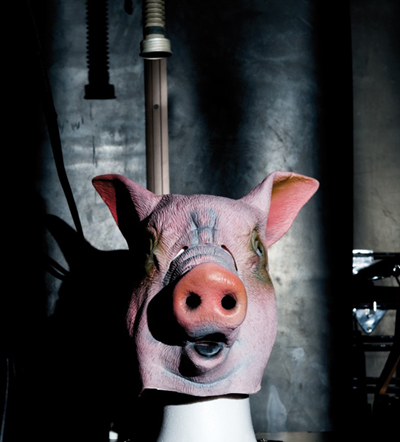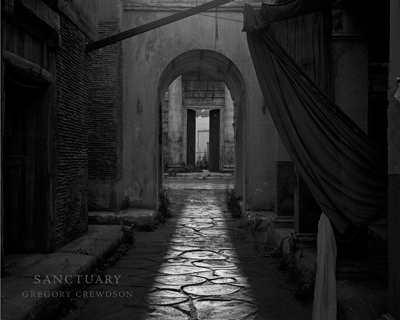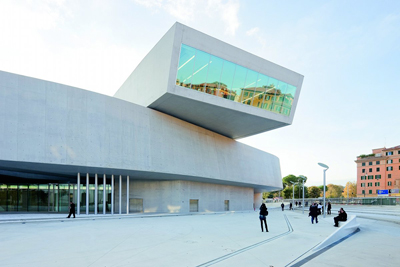![]()
![]()
Just weeks ago the Danish architecture office BIG (Bjarke Ingels Group) made it very, very big, unveiling their design for a new pyramid-shaped apartment tower in midtown Manhattan. So their first monograph, “Yes is More,” comes as a happy surprise. Unlike typical starchitect monographs, packed with stiff, self-congratulatory photographs, it’s a comic book that casts Bjarke Ingels, the office’s charismatic young leader, as a superhero who flies around the world designing buildings, calling upon his tireless staff of architects back home in Copenhagen for support.
It’s a saucy, surprising self-presentation. Most architects, especially successful ones, take themselves very seriously. The book’s title is a playful — and useful — inversion of modern architect Mies van der Rohe pronouncement, “Less is more.” It’s also a bright spot of optimism in the face of a troubled global economy that has devastated the construction and architecture industries. Bjarke Ingels, superhero, challenged by limited budgets, restrictive schedules, and demanding clients, nonetheless always finds a way to get things done.
(more…)


AUTOMATIC Automatic, New York, USA, by Formavision. Copyright Gestalten 2010. (Click for Slideshow)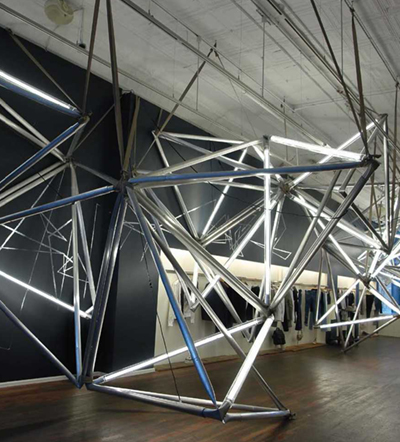
![]()
Everyone knows how it feels to walk down a city street that they’ve walked down many times before only to find that a familiar shop or restaurant has disappeared, been remodeled beyond recognition, or replaced with something new. Although we accept these spaces as fixed elements of our environment they’re really quite ephemeral. Even if a building survives for hundreds of years, it’s refashioned again and again to suit changing needs and tastes.
A new book, “Staging Space,” spotlights some impactful contemporary interiors whose power lies in their theatricality — in the assertive way that they shape the way we live, work and entertain ourselves. The designs featured in the book don’t hold back, using the boldest geometries, colors, and lighting to hold a visitor’s attention. This strategy works best in spaces that people spend a limited amount of time inside of, like stores and restaurants. A denim shop in New York City gives over its central space to an enormous, tree-like light sculpture, while the clothes hang quietly along the wall. A sweater shop in Osaka is lined with an arched, honeycomb-like plywood shelving system that gives it a happy, trippy feeling.
Other designs shape a radically inward-looking space that pulls inhabitants away from the larger environment. Exhibit spaces and offices are often designed this way, in order to divert an occupant’s attention from outside concerns.
(more…)

BRONX FLOOR FLOOR HOLE 01 Gordon Matta-Clark Bronx Floor: Floor Hole, 1972 courtesy of the Estate of Gordon Matta-Clark and David Zwirner Gallery (Click for slideshow)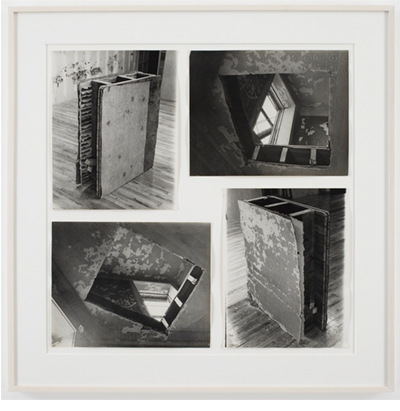
![]()
In 1975 the young American artist Gordon Matta-Clark took a chainsaw to a perfectly ordinary single family house in Englewood, New Jersey and split it in two. While the stunt smacked of bad-boy behavior and art world sensationalism, it was hardly an act of anarchy or desperation. Rather, it was the intervention of an artist with the keenest sensitivities renouncing commercialism in search of a more elemental understanding of space and materials.
A new exhibit at the David Zwirner Gallery collects artworks from 112 Greene Street, the legendary gallery Matta-Clark founded in SoHo in 1970. That space became a haven for a vibrant, eclectic group of New York artists who gathered, debated, performed, and exhibited there. This survey, which includes many pieces by Matta-Clark himself, brings that world richly to life and illuminates the themes of his work, themes that are as resonant today as they were forty years ago.
Educated as an architect, Matta-Clark left the profession to create sculptures, installations, films and photographs that often employed architectural forms and materials in unorthodox, unsettling ways. His most famous works are “cuttings,” strategic slicings, removals, and recombinations of parts of existing buildings.
(more…)

Click for slideshow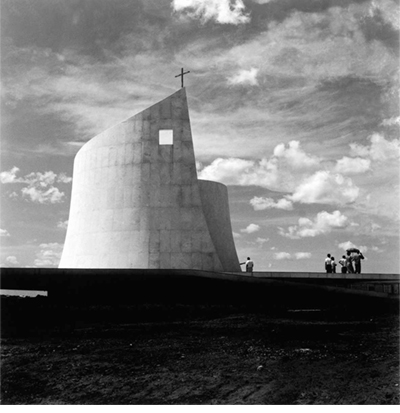
![]()
The fiftieth anniversary celebrations for the capital city of Brasilia in 2010 were an occasion for many to comment on its operational and design deficiencies, as well as those of the Brazilian government itself. In an earlier piece about the anniversary we noted how demographic shifts have challenged the city’s original master plan. These sorts of discussions, while necessary, tend to obscure the city’s ambitious, Utopian origins. Brasilia’s designers, urban planner Lucio Costa and architect Oscar Niemeyer, had shaped it to embody the most progressive political, social, and aesthetic concepts. A new book of photographs by Marcel Gautherot, “Building Brasilia,” that documents the city’s construction and early years, evokes these ideals with great power.
Gautherot was a Paris-born photographer who trained as an architect and worked as an ethnographic photographer in the 1930’s, traveling within Mexico and Brazil to document traditional cultures. After serving in the French army in Senegal during World War II, he returned to Brazil and began a photography practice. There he crossed paths with Niemeyer, who would begin working with Costa on plans for the new city in 1956. At Niemeyer’s encouraging, Gautherot visited Brasilia repeatedly as it was under construction from 1957 to 1960, and then again several times in the 1970’s. While the bulk of his photographic oeuvre is comprised of ethnographic work, Gautherot’s photographs of Brasilia offer a thorough, cohesive portrait of the new city.
(more…)


After decades of reorganization and reconstruction, Berlin has emerged as a hip European capital and tourist destination. Berliner Luft, a book by photographers Benjamin Tafel and Dennis Orel, celebrates some of the city’s less obvious delights. It spotlights destinations tucked away in faraway neighborhoods, behind unmarked doors, and open only late at night.
Divided politically, culturally, and physically after World War II, Berlin was a potent symbol of both cold war anxiety and postwar recovery. After reunification in 1989, and before the international economic collapse in 2008, the city offered plentiful housing stock and affordable rents. This, as well as the slightly romantic, run-down spirit of the place, drew creative types from around the world. So, at the same time that Germany was becoming part of the European Union, Berlin was distinguishing itself as a global center for art, fashion, design, and food. The city which had, before reunification, inspired musicians like David Bowie and U2, gave rise to a mecca-like club scene and became a playground for international DJ’s. The city’s oldest airport, Tempelhof, which was designed as a stage set for the Third Reich, was closed to air traffic in 2008 and has been happily, if controversially, repurposed for skateboarding, fashion shows, and music festivals.
(more…)

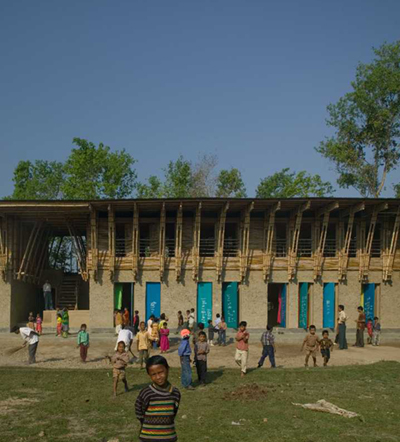
METI – Handmade School. Rudrapur, Bangladesh. 2004-06. By Anna Heringer and Eike Roswag. Image: Kurt Hörbst (Click to enlarge)
Over the last eight decades the architecture department at the Museum of Modern Art made its reputation by promoting avant-garde European and American work, mounting exhibits that defined and championed movements like the International Style, Postmodernism, and Deconstructivism. So MoMA’s new architecture exhibit “Small Scale, Big Change,” which focuses on modestly scaled, community-centered projects around the world, marks a dramatic shift in their mission.
It also serves as a potent call to arms. Architects everywhere today are challenged by economic instability and environmental concerns and, at the tail end of modernism, searching for a meaningful, unified language with which to build. The projects at MoMA suggest that the solution isn’t a new set of forms, but a new way to conceive and orchestrate building and infrastructure projects.
The eleven projects on display are truly global, and include works in Africa, South America, South Asia, and the Middle East. None was designed by a “starchitect,” and all were implemented in close collaboration with civic and community groups. Most significantly, each project grew out of real practical and social needs. One of the most powerful designs in the show is an American house prototype that costs only twenty thousand dollars. Two other projects, a primary school in Bangladesh and a linear park for Rio de Janeiro, were developed in direct response to community requests.
(more…)

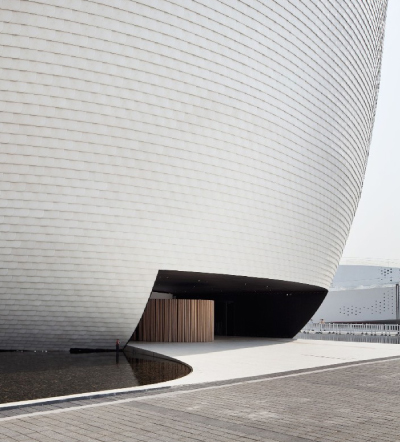
Finland's Shanghai Expo Pavilion, “Kirnu,” by JKMM (Finland), 2010. Photo: Derryck Menere. (Click to enlarge)
When the San Francisco Museum of Modern Art chose the Oslo-based architecture office Snohetta to design its addition this summer, it heralded the arrival of a great new wave of Nordic design. Not since the 1960’s, when Americans were lounging around in Verner Panton chairs and Marimekko dresses, has the voice of designers in Denmark, Finland, Iceland, Norway and Sweden been so prominent internationally.
An exhibit at Scandinavia House in New York, “Nordic Models + Common Ground: Art and Design Unfolded,” presents a small, intriguing selection of art and design projects. The unique character of modern Nordic design, a formal purity enlivened by gentle eccentricities, has often been attributed to the region’s isolating, rugged geography. Yet even in our present age of global connectedness these qualities remain evident. Each project on display combines forms and materials in unlikely ways. Yet even the strangest of them — like a rap song that outlines urban planning strategies, and light fixtures crafted from the dried skins of codfish — have a palpable warmth: they aren’t ironic.
In addition, each work on display has a startling formal simplicity, which owes less to a minimalist aesthetic than to the designer’s clarity in concept and economy in execution. This is especially remarkable in the architecture projects. A basic triangular tent module is arrayed to shape an exhibition pavilion. Another, spherical pavilion is clad entirely with flat, scale-like, composite wood shingles.
(more…)


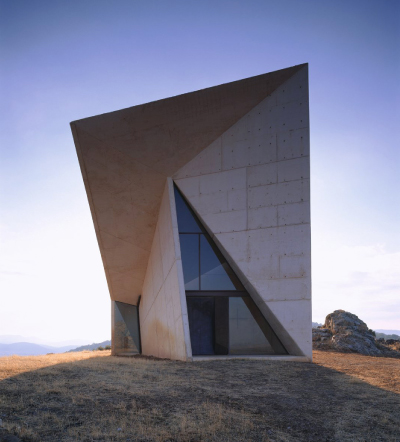
Chapel, Valleaceron, Spain, 2001. By Sancho Madridejos Architecture Office, from Closer to God, Copyright Gestalten 2010. (Click image to enlarge.)
The controversy over the construction of an Islamic cultural center near Ground Zero is surprising when one remembers that New York City is already rich with churches, temples, mosques, and storefronts selling supplies for vodun and santeria rites. It’s hard to remember when another building has caused such a fuss. What is it about this structure, which isn’t even a proper mosque, that stirs up such strong emotions? At a time when our culture seems to have become largely secular, how can a religious building still be regarded with talismanic powers?
A new book that looks at contemporary houses of worship, “Closer to God: Religious Architecture and Sacred Spaces,” takes up that very question. The structures pictured are eclectic in style, scale, materials, and in the different religions they shelter. There’s a one-person meditation hut in rural New England, an intimate Buddhist shrine in Kyoto, and an auditorium-sized cathedral in Rome. There are churches poured in rough concrete, others built with engineered glass curtain walls, and one clad in battered zinc panels.
If there’s anything these buildings have in common it’s the way that they employ pure geometries and natural light to evoke a spiritual dimension. In this sense, contemporary architects are following in the footsteps of their ancient counterparts. The use of idealized geometries like squares and circles, and the dramatic manipulation of daylight, are practices characteristic of traditional Judeo-Christian and Islamic architecture.
(more…)



Photographer Gregory Crewdson is known for his staged tableux of everyday suburban scenes. He uses movie lighting and post-production effects to compose dramatically lit and colored images that, in their heightened realism, verge on the surreal. They’re physically accurate and emotionally unsettling, without easy sentimental meaning.
For his latest project, in an interesting reversal, Crewdson documented the exterior stage sets at Cinecittà, the fabled movie studio in Rome. He worked in a more straightforward way, almost documentary-style, shooting in black and white and using natural light. These stately, evocative prints have been collected in a new book, Sanctuary, and are on view at the Gagosian Gallery on Madison Avenue in New York from September 23 through October 30.
What’s most striking about the scenes is their emptiness. There are no people here and no traces of them: no signage, no litter, no footprints or tire tracks. And yet the architecture of the sets invites occupation. There are plazas, walkways, and triumphal arched entryways. Where has everyone gone? As in the cityscapes of Giorgio DeChirico, the place seems to have been abandoned all at once, frozen in a historic moment by illness or catastrophe. Elements like half-open doors and stairs that lead nowhere have a dream-like resonance.
(more…)



![]()
No other contemporary architect has a formal language as seductive and expressive as Zaha Hadid’s. Her work has sidestepped the conventional forms of modern architecture (rigid boxes and planes) for something altogether different (warped and tilted vectors) with complete assurance.
Hadid’s new museum for contemporary art in Rome, MAXXI: Zaha Hadid Architects. In addition to a portfolio of masterful photographs by Iwan Baan, the volume contains insightful essays about the building’s design and development, architectural plans, detail drawings, and construction photos. It’s eye-opening to understand the immense coordination efforts, and also the vast grid of steel reinforcing, that were required to get this building up.
Since the project spanned from 1999, when Hadid’s office first won a design competition, to 2009, when construction was completed, MAXXI is a powerful summation of the ideas the architect explored during these fruitful years. Chief among them is the notion that buildings aren’t static constructions but complex, mutable entities that emerge from fields of energy and activity at a site. That idea is given full, clear expression at MAXXI. The building’s long curved walls follow the outline of the L-shaped site and retract and expand in response to adjacent street grids. The compressed, overlapping forms recreate the density of traditional Roman city blocks, and echo adjacent military barracks, train tracks, and the curve of the Tiber River. The structure looks strikingly contemporary and still sits comfortably within this very old city.
(more…)







 Facebook
Facebook Permalink
Permalink Digg
Digg Reddit
Reddit LinkedIn
LinkedIn StumbleUpon
StumbleUpon Tumblr
Tumblr